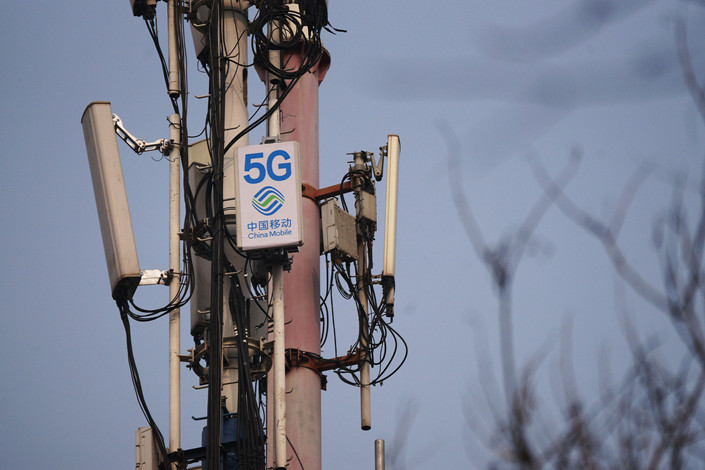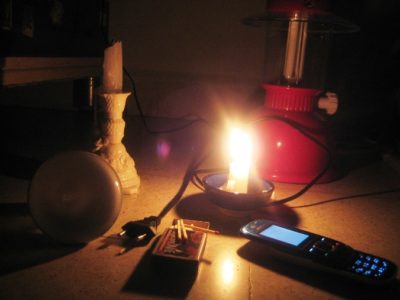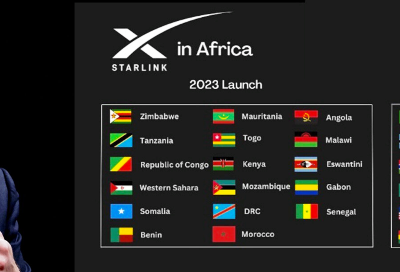Matters eRising with Olusegun Oruame
5G, the fifth generation of cellular technology for the next generation of smartphones and other wireless devices, is coming according to a recent official statement of the Nigerian Communications Commission (NCC) . The telecom regulator has already set up a committee to develop the Information Memorandum (IM) for the auction of 3.5 gigahertz (GHz) spectrum band which will be used for early deployment of 5G services in the country.
As Nigeria draws nearer commercial launch of 5G services, the concerns about the health risk of 5G is bound to be reignited. But you are most likely already familiar with the debates on ‘radiation, mobile phones, base stations and human health, all of which predate the 5G safety hoopla. There has always been concerns about the health safety of mobile connectivity.
As Scientific American notes: “The possibility of harms from environmental exposures to radio-frequency signals has been a long-standing concern of many citizens, leading to public opposition to wireless base stations, broadcasting facilities, cell phones and other commonplace technologies.”
In all of the evolutions of mobile technology from 1G to 5G in 2019, many people: telecom subscribers, public health and safety practitioners, environmentalists, legislators and advocacy groups among several other stakeholders have raised concerns over the likely effects of Electro-Magnetic Fields (EMF) emitted by telecoms base stations on humans.
For good reasons, the NCC being a proactive regulator has also encouraged scientific discussions around this. In 2014, the NCC hosted a conference on EMF exposure with the theme: ‘EMF in a Highly Connected Society: Understanding the Myths and Realities’ and got experts to articulate on some of the thorny issues on whether exposure from mobile networks poses health hazards.
The conference which drew participation from environmentalists, public health experts, regulators, legislators, operators, policy makers, mobile equipment manufacturers, and consumer groups among other stakeholders, maintained the position of the World Health Organization (WHO) which asserts that “no adverse health effects have been established as being caused by mobile phone use”.
What exactly is EMF and how does it concern you?
The effect of mobile phone radiation on human health is the subject of recent interest and study because mobile telephony is now commonplace around the world. There are currently more than six billion subscriptions worldwide. In Nigeria, connected mobile phones are in excess of 184 million. There were about 30,000 Base Transceiver Stations (BTS or simply called Base Stations) in 2014 but as at January 2021, Telecompaper reports that Nigeria has reached 53,460 3G and 4G base stations. In fact, the number of 3G and 4G BTS in Nigeria increased from 30000 to 53,460 in five years and there has been no record of increased in health-related hazards.
Mobile phones use electromagnetic radiation in the microwave range. Other digital wireless systems, such as data communication networks, produce similar radiation. Other wireless networks that allow high-speed internet access and services, such as wireless local area networks (WLANs), are also increasingly common in homes, offices, and many public areas (airports, schools, residential and urban areas).
As the number of base stations and local wireless networks increases, so does the RF exposure of the population. Recent surveys have shown that the RF exposures from base stations range from 0.002% to 2% of the levels of international exposure guidelines, depending on a variety of factors such as the proximity to the antenna and the surrounding environment. This is lower or comparable to RF exposures from radio or television broadcast transmitters.
RELATED
5G Services Underway In Nigeria As Danbatta Sets Up Committee On Spectrum Auction
In The Face Of Controversies, NCC Adopts A Progressive Approach To 5G Deployment In Nigerian
In 2011, International Agency for Research on Cancer (IARC) classified mobile phone radiation as Group 2B – possibly carcinogenic (not Group 2A – probably carcinogenic – nor the dangerous Group 1). That means that there “could be some risk” of carcinogenicity, so additional research into the long-term, heavy use of mobile phones needs to be conducted.
The WHO added that “to date, no adverse health effects have been established as being caused by mobile phone use. Many countries are benchmarking the guidelines of the WHO and the International Telecommunications Union (ITU) to put in place measures to minimize exposure to their citizens as a precautionary approach. But up to now, there is still no scientific proof that EMF undermines public or personal health.
Many scientific studies have investigated possible health symptoms of mobile phone radiation. These studies are occasionally reviewed by some scientific committees to assess overall risks. A 2007 assessment published by the European Commission Scientific Committee on Emerging and Newly Identified Health Risks (SCENIHR) concludes that the three lines of evidence, viz. animal, in vitro, and epidemiological studies, indicate that “exposure to RF fields is unlikely to lead to an increase in cancer in humans”.
The WHO has a similar conclusion in one of its many research works on RF signals. One of such conclusions states: “From all evidence accumulated so far, no adverse short- or long-term health effects have been shown to occur from the RF signals produced by base stations. Since wireless networks produce generally lower RF signals than base stations, no adverse health effects are expected from exposure to them.”
Health Concerns and Human Radiation Absorption Rate
A common concern about base station and local wireless network antennas relates to the possible long-term health effects that whole-body exposure to the RF signals may have. To date, the only health effect from RF fields identified in scientific reviews has been related to an increase in body temperature (> 1 °C) from exposure at very high field intensity found only in certain industrial facilities, such as RF heaters.
The levels of RF exposure from base stations and wireless networks are so low that the temperature increases are insignificant and do not affect human health.
The strength of RF fields is greatest at its source, and diminishes quickly with distance. Access near base station antennas is restricted where RF signals may exceed international exposure limits. Recent surveys have indicated that RF exposures from base stations and wireless technologies in publicly accessible areas (including schools and hospitals) are normally thousands of times below international standards.
In fact, due to their lower frequency, at similar RF exposure levels, the body absorbs up to five times more of the signal from FM radio and television than from base stations. This is because the frequencies used in FM radio (around 100 MHz) and in TV broadcasting (around 300 to 400 MHz) are lower than those employed in mobile telephony (900 MHz and 1800 MHz) and because a person’s height makes the body an efficient receiving antenna. Further, radio and television broadcast stations have been in operation for the past 50 or more years without any adverse health consequence being established.
While most radio technologies have used analog signals, modern wireless telecommunications are using digital transmissions. Detailed reviews conducted so far have not revealed any hazard specific to different RF modulations.
Parts of the radio waves emitted by a mobile telephone handset are absorbed by the body. The radio waves emitted by a GSM handset are typically below a watt. The maximum power output from a mobile phone is regulated by the mobile phone standard and by the regulatory agencies in each country.
Protection standards
International exposure guidelines have been developed to provide protection against established effects from RF fields by the International Commission on Non-Ionizing Radiation Protection (ICNIRP, 1998) and the Institute of Electrical and Electronic Engineers (IEEE, 2005). The guidelines caution that: “National authorities should adopt international standards to protect their citizens against adverse levels of RF fields. They should restrict access to areas where exposure limits may be exceeded.”
WHO Initiatives
WHO, through the International EMF Project, has established a programme to monitor the EMF scientific literature, to evaluate the health effects from exposure to EMF in the range from 0 to 300 GHz, to provide advice about possible EMF hazards and to identify suitable mitigation measures. Following extensive international reviews, the International EMF Project has promoted research to fill gaps in knowledge.
The NCC Response
As part of the outcomes in the 2014 Lagos conference, the NCC also reached the conclusion that “from present level of scientific knowledge, radiation from telecom base stations or the use of mobile phone is unlikely to cause adverse health effects.” The NCC has consistently maintained that “there is no proven study or research work that shows that Electromagnetic Fields (EMF) radiation has any effect on human health.”
The commission allows BTS to be deployed by operators in Nigeria based on the ICNIRP guidelines and standards for the installation of such equipment. Such permits are also based on similar guidelines referencing models adopted by the ITU and the WHO.
Now that 5G is imminent, any need to worry?
All of the5G conspiracy claims have generally been proven to be baseless, hoax theories. “Conspiracy theorists contend that the new network generates radiofrequency radiation that can damage DNA and lead to cancer; cause oxidative damage that can cause premature aging; disrupt cell metabolism; and potentially lead to other diseases through the generation of stress proteins.” The WHO and several experts have proven all these to be fanciful myths.
5G is an upgraded, more advanced version of the last of 4G and provides faster mobile communications. The technology works by using higher frequencies on the electromagnetic spectrum. The frequencies range from 3.5 gigahertz (GHz) to several tens of GHz. This 5th generation of mobile technology is expected to support the increasing number of electronic devices and services, including self-driving cars, virtual reality appliances, telemedicine, remote surveillance, and telesurgery among others.
No regulator will sit idle on the vast potential that 5G brings bearing in mind that there is no scientific evidence to justify any health risk claims. With its long history being proactive and a seemingly progressive approach to regulation, the inauguration of a standing committee to develop the IM for 5G launch, the NCC has strengthened Nigeria’s steady march into the digital economy. There is still no proven harm associated with 5G.
IMAGE: Caixin Global




























